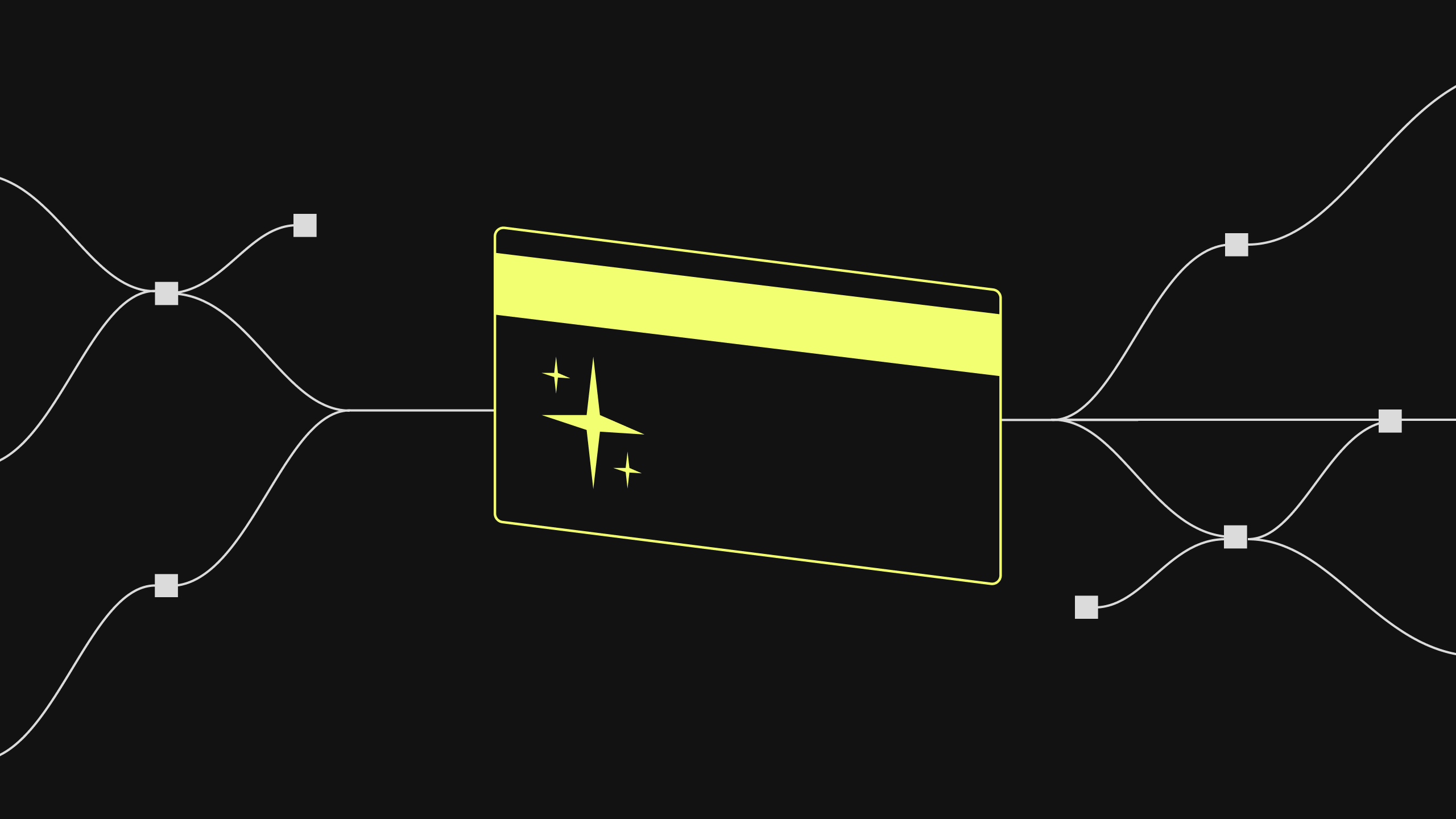
Key Takeaways
AI is revolutionizing the retail banking industry by enabling a new level of personalization, efficiency, and security.
- What it does: Beyond chatbots, banks are deploying AI to automate critical back-office processes like loan origination, KYC compliance, and real-time fraud detection.
- The business impact: This allows banks to reduce operational costs, minimize risk, and make faster, more informed decisions.
- The key outcome: A faster, more seamless customer experience, which is a key differentiator in a competitive market.
The conversation around AI in retail banking has, for the most part, been focused on the front lines. We’ve seen the rise of AI-powered chatbots, personalized mobile banking apps, and robo-advisors. While these customer-facing innovations are valuable, they represent only the surface of a much deeper transformation. The true, game-changing potential of artificial intelligence in retail banking lies not in the customer interface, but in the operational core of the institution itself.
For too long, the back office of retail banking has been a complex web of manual processes, legacy systems, and brittle automation. This operational friction is what dictates a bank’s efficiency, its ability to remain compliant, and, ultimately, its capacity to deliver on the promises made by its front-end technology. This article serves as a guide for banking leaders ready to shift the focus. It’s time to move beyond the limitations of traditional automation and the risks of generic AI to build an operational foundation that is intelligent, transparent, and resilient. The future of AI in retail banking will be defined by how well institutions re-engineer their core engine, not just by how they polish the hood ornament.
This transformation requires a new approach, one built on natural language that empowers banking and compliance professionals—not just programmers—to automate the critical workflows that drive the business. It’s about creating a secure and auditable operational backbone that turns the promise of AI in retail banking into a practical, powerful reality.
The Brittle Foundation of Traditional Banking Operations
Beneath the sleek mobile apps and modern branch designs, many banks operate on a foundation of decades-old processes. Key functions like loan origination, Know Your Customer (KYC) compliance, and dispute resolution are often manually intensive, slow, and prone to error. The first wave of retail banking automation attempted to address this with Robotic Process Automation (RPA).
RPA was a step in the right direction, but it was a tactical fix, not a strategic solution. These systems are essentially “screen scrapers” that mimic human keystrokes and mouse clicks. They are rigid and procedural. When a software interface is updated or a step in the process changes, the bot breaks, creating a maintenance backlog for IT and disrupting operations. This is not the robust framework needed for the strategic application of artificial intelligence in retail banking.
More recently, generic AI and low-code platforms have entered the market. While powerful, they introduce a different set of risks. Large language models can “hallucinate,” generating incorrect or fabricated information, a catastrophic liability in a regulated environment like banking. Low-code platforms, while more flexible than RPA, still require a developmental mindset and often lack the enterprise-grade governance and auditability that financial institutions demand. The impact of AI in retail banking cannot be fully realized if the technology introduces new, unacceptable risks.
AI That Understands Banking in English
To truly unlock the benefits of AI in retail banking, we need to change the fundamental way we interact with technology. The next generation of AI in retail banking is not about programming bots; it’s about teaching AI to understand business processes described in plain, natural language. This is the core of a new approach that makes retail banking using AI accessible to the people who know the processes best: the banking professionals themselves.
Imagine a compliance officer automating a new regulatory check by simply writing out the steps in English. Or a loan manager adjusting underwriting criteria without needing to file a ticket with IT. This is the power of a platform that uses English as its code. It democratizes automation, bridging the long-standing gap between business intent and technical execution.
This paradigm shift is enabled by a more advanced neurosymbolic AI architecture. Unlike purely generative models, this approach combines the language understanding of large models with a logical, reasoning framework. This is crucial for artificial intelligence in retail banking because it ensures processes are followed with precision and eliminates the risk of AI hallucinations. When the system can reason, it can handle exceptions intelligently, a key failure point for older automation. This makes retail banking using AI not just more efficient, but also safer and more reliable.
The Three Pillars of a Resilient AI Strategy in Banking
A successful strategy for AI in retail banking rests on three foundational pillars: operational intelligence, bulletproof governance, and a unified system of record. Building on these pillars ensures that automation is not just a series of isolated projects, but a cohesive, enterprise-wide capability that drives lasting value.
1. Unlocking True Operational Intelligence
The goal of retail banking automation should be to create seamless, end-to-end workflows, not just to automate piecemeal tasks. A natural language-based platform excels here.
- Use Cases for AI in the Retail Banking Industry: Consider loan origination. An intelligent system can ingest and understand all documentation (pay stubs, tax returns, bank statements), cross-reference data for inconsistencies, verify employment, run credit checks, and flag applications for underwriter review—all as part of a single, automated flow described in English. The same intelligence can be applied to customer onboarding (KYC/AML), trade finance, and fraud detection, transforming the impact of AI in retail banking from marginal to monumental.
2. Ensuring Bulletproof Governance and Compliance
For any bank, auditability is non-negotiable. One of the most significant advantages of using English as the automation language is that the process is the documentation. Auditors and regulators can read the automation in plain English and understand exactly what the process does, creating a level of transparency that is impossible with traditional code or visual builders. This is a critical component for any retail banking AI platform. This inherent explainability, combined with an architecture that prevents hallucinations, provides the robust governance that is a prerequisite for the deep integration of artificial intelligence in retail banking.
3. Building a Unified System of Record
Every bank runs on a massive amount of “tribal knowledge”—the unwritten rules and process nuances that live inside the heads of experienced employees. A major benefit of retail banking using AI with natural language is that it extracts this knowledge and codifies it into a dynamic, searchable, and permanent system of record. When an employee describes how to handle a specific type of customer dispute, that knowledge is captured as part of the automated process. This preserves institutional wisdom and ensures that operations are consistent, transparent, and continuously improving.
Your Roadmap for Implementing AI in Retail Banking
Embarking on a true transformation with AI in retail banking requires a strategic and deliberate approach. It’s about building a capability, not just buying a tool.
- Step 1: Start with Core Operational Pain Points. Resist the temptation to begin with a flashy, customer-facing pilot. The greatest initial ROI comes from tackling a complex, high-volume internal process that is a known bottleneck, such as mortgage processing or commercial client onboarding. Success here will build the business case and momentum for broader adoption of retail banking AI.
- Step 2: Prioritize Governance and Business Empowerment. When evaluating platforms for artificial intelligence in retail banking, look beyond the automation features. Ask critical questions: Can our business and compliance teams understand and verify the automations? Is the system designed to prevent AI hallucinations? Does it empower our experts or create another dependency on IT?
- Step 3: Adopt a Unified Platform Mentality. To avoid the pitfalls of tool sprawl, select a single, enterprise-grade platform that can handle a wide variety of back-office use cases. This consolidation is key to building a cohesive strategy for AI in retail banking and maximizing long-term value.
By following these best practices, leaders can ensure their investment in artificial intelligence in retail banking builds a truly resilient and intelligent operational foundation.
Discover the Power of Kognitos
Our clients achieved:
- 97%reduction in manual labor cost
- 10xfaster speed to value
- 99%reduction in human error
AI should be used to automate complex, end-to-end operational processes like loan origination, customer onboarding (KYC), fraud detection, and compliance reporting. The most effective approach is to use a natural language platform that allows banking professionals to build and manage these automations directly.
The primary impact is a dramatic increase in operational efficiency, a reduction in human error, and stronger compliance. This leads to faster decision-making, lower costs, and an improved ability to serve customers quickly and accurately, which indirectly enhances the customer experience.
The key steps are: 1) Identify a critical, high-impact operational process to serve as the initial use case. 2) Select an enterprise-grade AI platform that prioritizes governance, auditability, and business-user empowerment. 3) Train business teams to build automations using natural language, creating a culture of citizen-led automation. 4) Scale the platform across other departments to create a unified, intelligent operational core.
The best practices include prioritizing security and compliance, choosing an AI architecture that prevents hallucinations, ensuring every automated process is transparent and auditable, and empowering business users to drive the automation process.
Key use cases include automating loan and mortgage processing, streamlining KYC and AML checks, managing trade finance documentation, automating financial reporting and reconciliations, and intelligently handling customer dispute resolutions.
Future trends will move beyond simple task automation toward building fully autonomous operational systems of record. AI will become the central engine for all back-office processes, with natural language as the primary interface for managing the entire operational fabric of the bank, making retail banking using AI the default standard.








